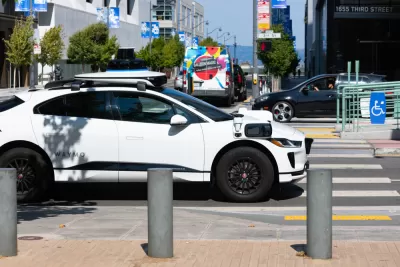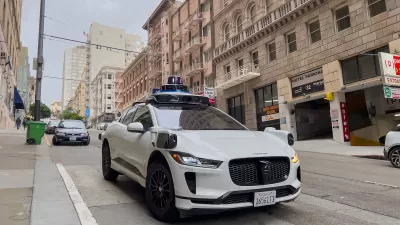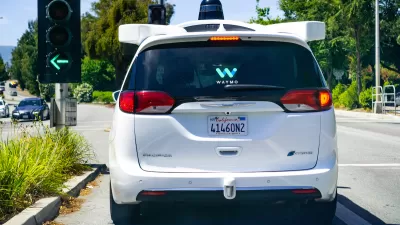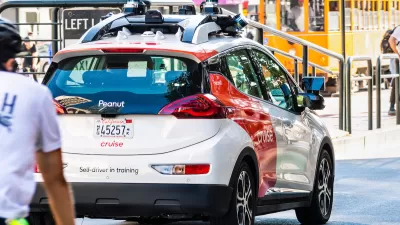Footage from buses and trains show self-driving cars from Waymo and Cruise frequently make unscheduled stops, blocking transit vehicles and causing traffic snarls.

“Bus and train surveillance videos obtained by WIRED through public records requests show a litany of incidents since September in which anxiety and confusion stirred up by driverless cars has spilled onto the streets of the US city that has become the epicenter for testing them,” reports Paresh Dave in Wired.
Buses in San Francisco, where Waymo and GM’s Cruise have launched their fleets of autonomous vehicles, are increasingly being hampered by the self-driving cars. Although the testing is legal based on state law, San Francisco officials have been pressuring state regulators to crack down on the vehicles until more safety testing is undertaken.
According to Dave, the city’s driverless cars have “proven to be a glitchy nuisance, snarling traffic and creeping into hazardous terrain such as construction zones and downed power lines” and making unplanned stops in the middle of the street.
Unlike pedestrians or smaller vehicles, buses and trains can’t easily circumvent a blockage like a stalled driverless car, “saddling transit-dependent travelers with some of the biggest headaches caused by errant driverless cars, according to transit advocates.”
Dave quotes a Muni bus driver blocked by a Waymo car, commenting on the purported intelligence of the vehicles: “This one not smart yet. Not smart.”
FULL STORY: Dashcam Footage Shows Driverless Cars Clogging San Francisco

Study: Maui’s Plan to Convert Vacation Rentals to Long-Term Housing Could Cause Nearly $1 Billion Economic Loss
The plan would reduce visitor accommodation by 25,% resulting in 1,900 jobs lost.

North Texas Transit Leaders Tout Benefits of TOD for Growing Region
At a summit focused on transit-oriented development, policymakers discussed how North Texas’ expanded light rail system can serve as a tool for economic growth.

Why Should We Subsidize Public Transportation?
Many public transit agencies face financial stress due to rising costs, declining fare revenue, and declining subsidies. Transit advocates must provide a strong business case for increasing public transit funding.

How to Make US Trains Faster
Changes to boarding platforms and a switch to electric trains could improve U.S. passenger rail service without the added cost of high-speed rail.

Columbia’s Revitalized ‘Loop’ Is a Hub for Local Entrepreneurs
A focus on small businesses is helping a commercial corridor in Columbia, Missouri thrive.

Invasive Insect Threatens Minnesota’s Ash Forests
The Emerald Ash Borer is a rapidly spreading invasive pest threatening Minnesota’s ash trees, and homeowners are encouraged to plant diverse replacement species, avoid moving ash firewood, and monitor for signs of infestation.
Urban Design for Planners 1: Software Tools
This six-course series explores essential urban design concepts using open source software and equips planners with the tools they need to participate fully in the urban design process.
Planning for Universal Design
Learn the tools for implementing Universal Design in planning regulations.
Ascent Environmental
Borough of Carlisle
Institute for Housing and Urban Development Studies (IHS)
City of Grandview
Harvard GSD Executive Education
Toledo-Lucas County Plan Commissions
Salt Lake City
NYU Wagner Graduate School of Public Service





























